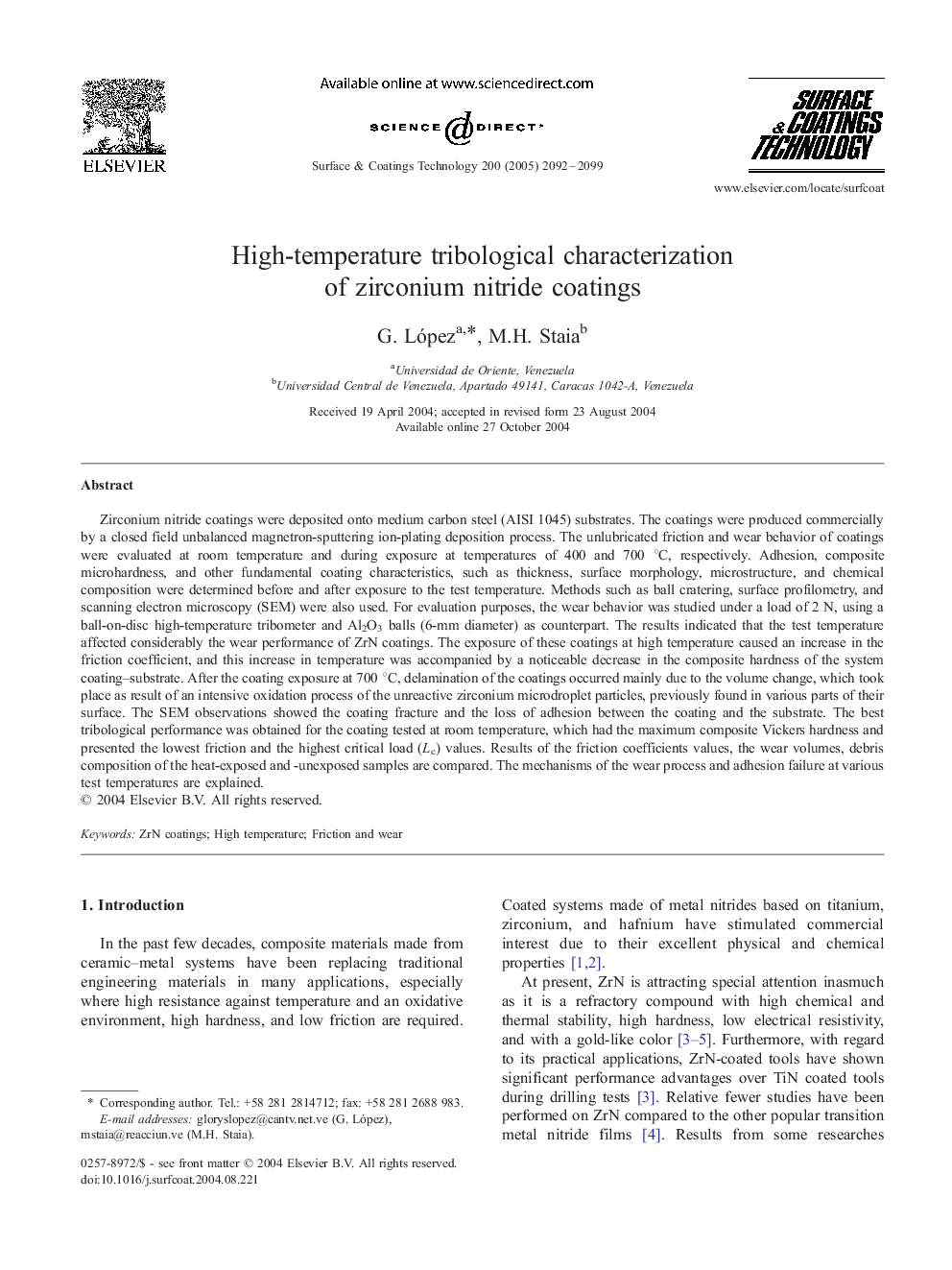| کد مقاله | کد نشریه | سال انتشار | مقاله انگلیسی | نسخه تمام متن |
|---|---|---|---|---|
| 1663417 | 1008469 | 2005 | 8 صفحه PDF | دانلود رایگان |

Zirconium nitride coatings were deposited onto medium carbon steel (AISI 1045) substrates. The coatings were produced commercially by a closed field unbalanced magnetron-sputtering ion-plating deposition process. The unlubricated friction and wear behavior of coatings were evaluated at room temperature and during exposure at temperatures of 400 and 700 °C, respectively. Adhesion, composite microhardness, and other fundamental coating characteristics, such as thickness, surface morphology, microstructure, and chemical composition were determined before and after exposure to the test temperature. Methods such as ball cratering, surface profilometry, and scanning electron microscopy (SEM) were also used. For evaluation purposes, the wear behavior was studied under a load of 2 N, using a ball-on-disc high-temperature tribometer and Al2O3 balls (6-mm diameter) as counterpart. The results indicated that the test temperature affected considerably the wear performance of ZrN coatings. The exposure of these coatings at high temperature caused an increase in the friction coefficient, and this increase in temperature was accompanied by a noticeable decrease in the composite hardness of the system coating–substrate. After the coating exposure at 700 °C, delamination of the coatings occurred mainly due to the volume change, which took place as result of an intensive oxidation process of the unreactive zirconium microdroplet particles, previously found in various parts of their surface. The SEM observations showed the coating fracture and the loss of adhesion between the coating and the substrate. The best tribological performance was obtained for the coating tested at room temperature, which had the maximum composite Vickers hardness and presented the lowest friction and the highest critical load (Lc) values. Results of the friction coefficients values, the wear volumes, debris composition of the heat-exposed and -unexposed samples are compared. The mechanisms of the wear process and adhesion failure at various test temperatures are explained.
Journal: Surface and Coatings Technology - Volume 200, Issue 7, 21 December 2005, Pages 2092–2099